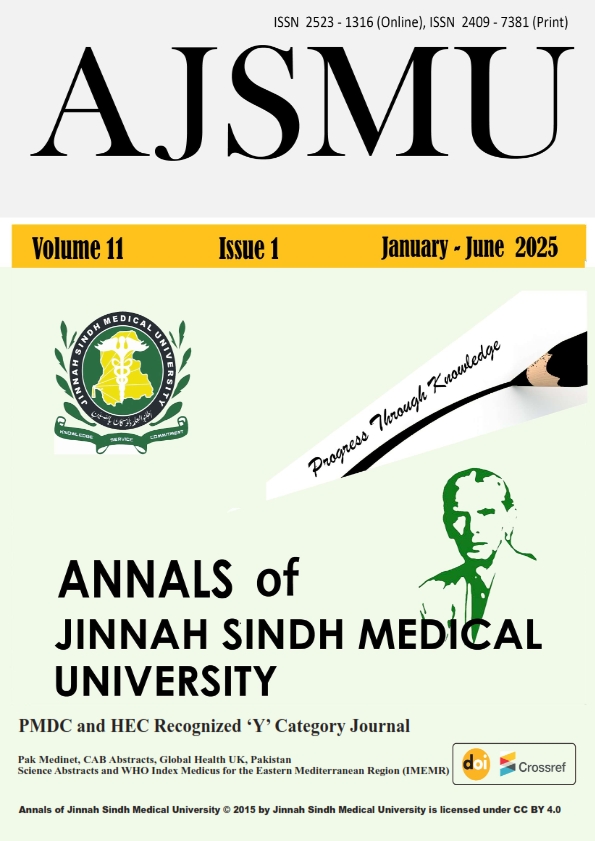A Survey of Perioperative Monitoring of Body Temperature and Various Techniques Used in Warming the Patients
Abstract
Objective: To determine the frequency of patient warming and the various techniques used for patient warming in different tertiary care hospitals of Karachi Pakistan
Methodology: The present study was a one-year cross-sectional study conducted at three different hospitals
in Karachi in which 80 anaesthesiologists (consultants, specialists and final-year residents) were included
through non-probability sampling. The data on perioperative temperature recording and warming methods, including blankets, forced-air warming, and infusion of warmed fluids, were retrieved through a self-
administered questionnaire. This study was conducted to evaluate the knowledge and practices of anaesthesiologists in preventing intra- or perioperative hypothermia and its consequences, and informed verbal consent was obtained from all participants. The SPSS version 26 was used to analyze the data. Descriptive statistics were calculated, and the data was analyzed and generated with 95% confidence interval by using SPSS version 26.
Results: The mean age of the participants was found to be 40.13 ± 13.09 years, among them 63.7% were
male. The practice of patient warming was documented in 70% of participants. Ambient temperature adjustment was noted as the most common technique, used by 83.3% of the warming group as compared to 16.7% of the non-warming group (p=0.121). Forced-air warming (59.1% vs. 40.9%, p=0.832) while intravenous fluid warming was documented in (62.5% vs. 37.5%, P > 0.05). Temperature monitoring was inconsistent, with
over 50% of patients never monitored during surgery or recovery?.
Conclusion: The results show that there is variability in perioperative temperature monitoring and warming
practices among anaesthesiologists in Karachi. While use of patient warming was widespread, application
methods varied considerably. Ambient temperature adjustment was an overused technique; however, practices
such as forced-air warming and fluid warming were mixed. These findings highlight the need for standardization of protocols and increased clinician awareness in order to prevent perioperative hypothermia and its associated complications.
Copyright (c) 2025 Annals of Jinnah Sindh Medical University

This work is licensed under a Creative Commons Attribution 4.0 International License.


